Soil type
Peonies prefer well-drained soil that is not overly rich in nutrients. Clay soil works well because it gives the roots a firm footing. Loose sandy soil of these plants is not at all to their liking.
You can add a little sand to the ground if it is too dense and the water stagnates for a long time. In this case, a small amount of drainage layer will help get rid of the problem and keep the root system from rotting.
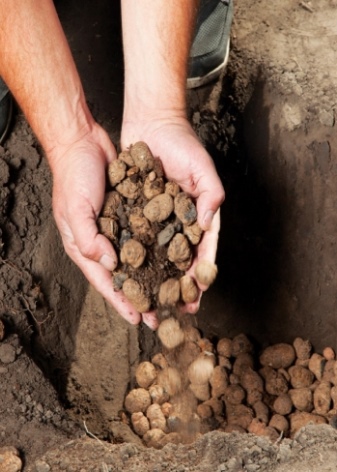

It is important for young plants that the soil is moist, especially in hot and dry weather, but watering should be done at intervals. Fertilizers are not applied under peonies, since they do not require additional feeding for five years after planting.
After this time interval, a handful of bone meal in the spring and the same amount of wood ash in the fall is sufficient.
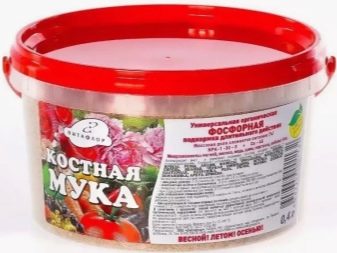
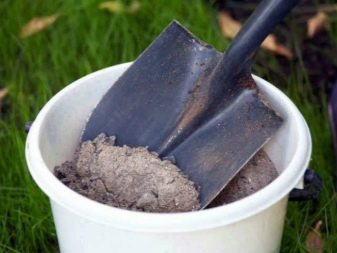
If compost is available, it is the ideal solution. Be sure to add a little agricultural limestone to its composition. This combination is the optimal "diet" for a peony. Better little feeding than too much, as peonies are too susceptible to mineral poisoning.
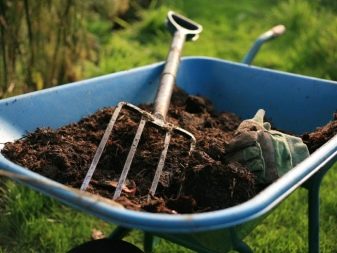
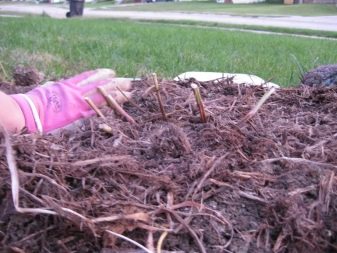
Application in design
The plant is versatile in terms of design. At the beginning of the season and after flowering, the bush looks decorative due to dense foliage, it is used not only for decoration, but also as an element of landscaping. Combines Team Performance with light-colored peonies, with plants blooming with yellow, blue, white flowers.
From Teams Performance to mixborders include:
- roses;
- hydrangeas;
- lilies;
- irises;
- petunias;
- ornamental shrubs and conifers.
It is not recommended to place the peony near crops with a creeping root system or highly branched, for example, with lilacs or budleias. The peony will not have enough food, which will affect the decorativeness of the habit.
Peonies should not be placed near junipers, since conifers often infect the plant with rust.
A few examples with a photo of the use of the Command Performance peony in the design of a garden or plot:
- Round flowerbed from a mix of plants.
- As a tapeworm.
- In mass planting with other varieties near a building wall or fence.
- Included in compositions with dwarf conifers.
- Linear arrangement for creating hedges.
Growing a flower
Having planted this variety once, you can admire the beautiful flowering for almost half a century. Careful care and love are required from a person.
You can breed a culture:
- root cuttings;
- layering;
- seeds.
Planting by root cuttings
The most common method for propagating a culture is by dividing the rhizome. For this, adult (5-8 years old) healthy bushes are suitable.

Peony root cuttings Command
Breeding process:
- Choosing a bush.
- Digging it up.
- Division of the rhizome into parts with several eyes.
- Soaking the cuttings in a manganese solution.
- Processing cuts with crushed charcoal or cinnamon powder.
- Keeping in the air for several days.
- Disembarkation to a permanent place.
Another type of root cutting is to dig out the cuttings. To do this, in the fall, the bush is dug in a circle and mulched high. In the spring, outgrowths of dormant buds will grow next to it. Here they can be separated and put in a new place.
Note! Both methods allow you to obtain a plant with the protection of varietal qualities.
What time is the boarding
The strongest bushes grow in early autumn planting. The ideal time is the first decade of September. During the autumn months, the plant will take root well. In winter, the roots will continue to develop.
If necessary, you can plant and replant the bushes in the spring before the start of the growing season.
Seat selection
Command Performance, like many other peonies, has been growing in one place for many decades. Therefore, a fairly large area is required for a bush. It is better to plant other plants at a distance of at least 1 m. Does not like this variety and direct sunlight, prefers partial shade. So the decorativeness of the buds will last much longer.
How to prepare the soil and flower for planting
Peonies are very undemanding to the composition of the soil. They grow well on clay and loamy soils. Sandy soil on the site should be diluted with denser soil. Density is needed as a stable support for the root system. It is also recommended to loosen very dense soil a little, adding sand, peat.
Important! When planting, it is very important to line the bottom of the planting pit with drainage materials (expanded clay, broken brick, pebbles). Stagnant water quickly leads to root rot
For a seedling, pre-planting preparation is also necessary. The main thing is to check it for damaged areas. Further, the cleaned cut is disinfected in a manganese solution and kept in the air for 2-3 days. After the seedling is ready for planting.
Planting procedure step by step
A hybrid of a peony Command Performance (hybrida paeonia Command Performance) will grow well, bloom, subject to simple planting rules. Step by step it looks like this:
- A hole is dug with dimensions of 0.6 × 0.6 × 0.6 m.
- A bucket of humus (compost), 0.5 liters of ash, 0.2 kg of a potassium-phosphorus complex are added to the removed earth.
- Drainage (broken brick, pebbles) is poured at the bottom of the hole.
- Ready soil is poured onto the drainage up to 1/3 of the pit height.
- Above is a sapling with straightened roots.
- The bush is sprinkled with the remaining soil and compacted.

Peony bush Command
Further, the new bush needs to be watered abundantly, if necessary, you need to fill up the earth.
Important! The buds of the seedling must not be deepened more than 5 cm from the ground level
Planting with seeds (for breeding)
The seeds are harvested until fully ripe. Before sowing, they are stratified. This process is long, it consists in warming up wet crops to 30 ° C, cooling under glass to room temperature (25-28 ° C). The seedlings placed in a bright place are regularly moistened. The roots should appear in two months.
For your information! Seed germination is extremely low, no more than half of the total sown amount.
Then the cold phase sets in, that is, the seedlings dive into separate containers with fertile soil and place them in the cold (you can use a refrigerator if you do not open it often). They will stay there for the next 3-4 months.
With the appearance of the first leaves, the seedlings are again exposed in a bright, warm place before planting in open ground.

Seeds Command
Peony Command Performance
The hybrid variety was introduced to the world community back in the 90s. Since then, the Command Performance peony not only has not lost its popularity, but, on the contrary, has taken an honorable leading place among double red peonies.

Team Performance is one of the outstanding hybrid varieties
Description of the variety
This herbaceous plant is a hybrid (hybrida), which has powerful shoots about 70-80cm in height, partly prone to lodging. Leaves are carved, green, typical for peonies. They are absent on the lower part of the shoots.
Huge scarlet inflorescences are a feature of the Team Performance variety. This is what brought him fame and universal recognition. The diameter of the flower can reach 30 cm. On strong and long peduncles there are single flowers - pompons, which have a slightly perceptible pleasant aroma.

Magnificent peony flower Command Performance
Advantages and disadvantages
Peony Command Performance, the description of which indicates a very aristocratic appearance, is a rather unpretentious hybrid. Many of its characteristics can be considered as advantages, namely:
- bright and spectacular bloom;
- high frost resistance;
- standard care requirements;
- climate resilience;
- ease of reproduction;
- weak susceptibility to disease.
Along with the pluses, there are also some disadvantages. These include:
- exactingness to the composition and structure of the soil;
- the need for regular feeding.
Use in landscape design
Peony Command performance is quite often used by landscape designers for various decorative purposes. To decorate the plots, not only the inflorescences of the plant are used, but also its green part.

Team Performance is widely used in landscape design
Options for using peony in the process of landscaping the territory:
- With tape planting, it is used for zoning space on the site, as well as as a low hedge.
- Group plantings look spectacular as an accent in open lawn areas.
- You can use Command Performance in continuous flowering flower beds in a group with daylilies, irises or pelargoniums.
- Against the background of lush green boxwood or coniferous ornamental plants, peonies will stand out favorably and make up an original decorative composition in a group.
Peculiarities
The variety of peonies "Lollipop" is not for nothing that received such a name, because the flowers of the plant really look like sweet sweets. The petals of this variety are terry, have a double striped color.
Many growers prefer to purchase this particular variety of peonies, since it is very colorful. Juicy shades of pink, red, yellow and their combinations always captivate fans of varietal peonies.


It is believed that this hybrid plant was bred in the 90s of the last century. The Lollipop bush grows quite large and rounded, reaching almost 80 centimeters in height. Flowering usually begins in late May - early June. On one bush, many lateral buds can form, which will delight for a long time. The flowers themselves reach 15-17 cm in size.
This variety is resistant to changing weather conditions. According to some reports, it can survive even severe frosts down to -35 degrees and wind. When blooming, peonies emit a subtle, but at the same time very pleasant aroma.
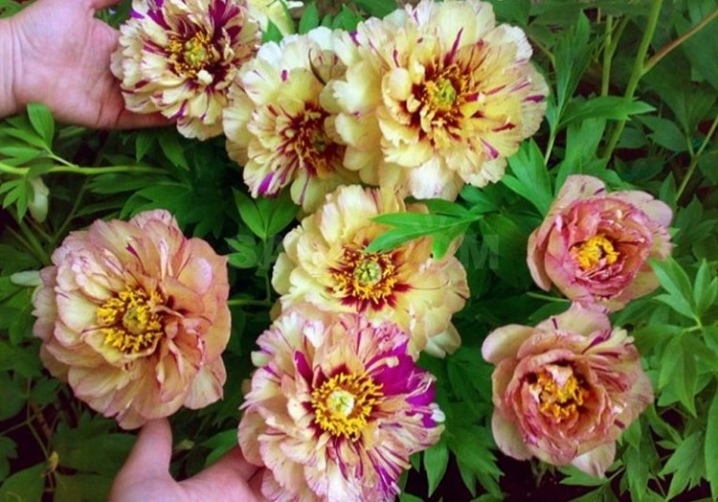
Characteristics of the variety
In ancient China, the peony was considered "divine" and was revered by high ranks. Russian gardeners love this flower for its variety of shades and unpretentiousness. It is not afraid of low temperatures and grows well in arid places. "Diana Parks" (Diana Parks) is a densely double peony with "burning" red inflorescences. The description of the variety implies highlighting the following characteristics:
- herbaceous perennial with a powerful fleshy root system;
- large globular inflorescences (up to 15 cm in diameter) of a dark scarlet color;
- light green leaves and dense stem;
- petals in flowers do not crumble and keep their "shape" for a long time;
- plant height reaches 95 cm;
- early flowering (June and July);
- rich sweetish aroma;

Diana Parks looks beautiful in both single and group plantings. This variety is used in the preparation of voluminous bouquet and other flower arrangements.
Landing rules
Peony Command Performance prefers a well-drained soil, since it does not tolerate stagnant moisture at the roots. Too greasy and nutritious soil is not suitable, it is best to give preference to loam. Loose soil is not for this shrub, the roots need good support.
The choice of a place for a peony must be approached responsibly, since he does not like transplants. They injure a perennial, he begins to hurt and may even die. Ideally, Team Performance is located in partial shade, where it will be protected from the scorching midday sun. You can not plant the rhizome close to the fence or other buildings, the bush should develop well and freely. However, it should be borne in mind that drafts and cold winds are contraindicated for a peony, so the site is selected protected.
The selected place is prepared in advance. Since autumn, the soil is dug deeply, flavored with humus or compost.Mineral fertilizers are not applied under the peony.
It is better to plant the Command Performance rhizome at the end of August or at the very beginning of September, then during the autumn and winter the plant will take root well and will delight you with flowering in the spring. However, in regions with a warm climate, planting is allowed in early March or April, when the soil warms up to a temperature of +8 ... + 10 ° C.
The acquired rhizomes are not ready for planting, so it is worth carrying out a number of procedures:
- Carefully inspect the tubers, remove all spoiled and damaged areas with a sharp knife.
Removing rotten areas is important to healthy tissue
You can completely dust the rhizomes with wood ash
When there are no branded preparations at hand, it is better to use a solution of potassium permanganate
Before starting the procedure, it is better to rinse the roots well under running water.
Such measures activate the natural forces of the shrub, stimulate the growth of roots.
The description indicates that there are no peculiarities in the landing of the Command Performance peony. It is enough to remember that between the bushes you need to leave space for development. Planting holes are made at a distance of 70-100 cm. The depth of the holes is about 50-60 cm. The bottom must be drained so that excess moisture does not accumulate. During planting, the delenki are buried, the buds should be underground at a level of 3-5 cm. This will protect them from freezing.
Description of peony Command Performance
In the late 90s, breeders introduced a new peony hybrid, the bushes of which quickly conquered the public. The cultivar has won many awards and has taken the leading place among the large-flowered varieties. In 1998, at an exhibition in the USA, he became a grand champion.
The peony bushes of Command Performance are spreading, the shoots are strong, erect, but in some cases they can be rejected. Their lower part is bare. The height of an adult plant reaches 80 cm; supports are required when growing. The crown is spherical, can reach 1 m in diameter. The leaves are deep green, carved. The culture grows quickly, so when planting, you need to leave enough space between the bushes. This will make it easier to care for the massive plant.
In the description of the hybrid it is indicated that Team Performance belongs to the light-loving varieties. However, it should be borne in mind that planting in an open, sunny area significantly reduces the flowering time. The inflorescences quickly fade in direct sunlight, the petals lose their bright color. It is best to set aside an area for the peony, where the bush will be illuminated in the morning and after lunch.
The advantage of this hybrid is the high winter hardiness of the bushes. The rhizomes of the plant painlessly tolerate a decrease in temperature to -40 ° C. That is why peony can be grown in any region of the country.
Flowering features
Team Performance is a herbaceous hybrid with double large inflorescences, their diameter reaches 23-25 cm. Only one bud is formed on a high peduncle, the lateral ones are absent. Flower hats are durable, resilient, outwardly reminiscent of a pompom. The petals are tightly pressed against each other, slightly dissected at the top. The color of the flower is rich red with a slight coral tint. Peony does not have a strong aroma, there is a slightly perceptible subtle smell.
The inflorescences of this variety are very dense, they are not afraid of rain.
Most sources indicate that the Command Performance hybrid belongs to the early varieties in terms of flowering time. In the southern regions, the first inflorescences bloom in early May, full flowering occurs in the middle of the month. In Moscow and the Moscow region, the peony will delight you with lush hats in the second decade of June. Flowering will continue for a month.
The large-flowered hybrid is widely grown for industrial cutting. The buds do not fall off and retain their presentation for a long time. However, for lush flowering, the shrub needs nutritious soil and timely feeding.
Application in design
Hybrid Team Performance, like all tall peonies, should not be planted next to other large plants. A struggle for territory and water quickly arises between them.In landscape design, large-flowered shrubs do not need additional decoration, they are planted singly, in small groups, and a border is drawn up.
Peonies of Team Performance look very beautiful during the flowering period, but after it the monotonous carved foliage needs to be closed. In the neighborhood, it is good to plant plants with whole leaves that bloom later. Suitable for:
Delicate inflorescences are combined with large peony caps Command Performance
Simple varieties of daylily look good with terry peonies.
It is better to plant hosts with bright foliage next to Team Performance
All of them will keep company and create the right background throughout the summer.
Next to the round caps of the peony, the vertical inflorescences of the cuff and foxglove look good. In terms of flowering time, they coincide with Team Performance and complement it well.
Lupine combined with Command Performance
To create a harmonious composition, the lower part of the tall peonies of Team Performance should be covered with suitable plants. In landscape design, stunted and ground cover perennials are most often used. Look great:
Due to their lush bushes, low-growing asters are suitable for planting in the foreground.
The culture grows slowly, so it will be able to cover bare peony stems for a long time.
Sprawling bushes with brightly colored foliage - a good company to the fore for tall shrubs
While the Team Performance peonies are just waking up, the primroses are already actively blooming and decorating the flowerbed
Prefers sunny locations and does not cause a lot of hassle
These plants not only cover the unsightly part of the shrub, but also create an additional background, at a time when the peony has already faded.
Follow-up care
Peony care for Team Performance comes down to regular watering and feeding. The soil must be moistened so that moisture saturates the entire earthen lump, however, the landing site cannot be turned into a swamp.
It is better to fertilize the shrub with phosphorus-potassium mixtures, humus or compost. Top dressing is done several times per season, starting in early spring. As soon as the soil thaws, it is well loosened and humus is introduced. 2-3 weeks before flowering, they switch to ash and other phosphorus-potassium fertilizers. In the fall, the bush is well spud with compost, which serves as the last top dressing.
As the Komand Performance peony grows, the shoots stretch upward, the bush expands, and some buds come to the surface. This should not be allowed, otherwise they will suffer from severe frosts in winter. In autumn, the trunk circle is well loosened and mulched with a high layer of humus or compost.
Throughout the growing season, the rhizomes should receive not only nutrients, but also oxygen. To do this, the soil around the bushes must be regularly loosened and freed from weeds.
Perform the procedure carefully so as not to damage the kidneys.
Preparing for winter
At the end of summer, the Commander Performance peony needs to be given attention and the bush must be prepared for winter. The last time feeding is applied in mid-September, using phosphorus-potassium mixtures
This will help the bushes recover from flowering, replenish their nutrient reserves and successfully winter.
With the onset of stable cold weather, the shoots are cut off, leaving 5-7 cm above the soil surface. The trunk circle is mulched with a thick layer of humus, peat or compost. In winter, the shrubs are additionally insulated with snow, which is specially raked from the paths. In early spring, the shelter is removed so that the shoots and roots do not have time to dry out.
Planting and leaving
Team Performance is a peony variety with its own requirements for the planting site. In a sunny area without periodic shading, the color of the petals brightens and loses its gloss. This feature is taken into account when choosing a place, a good option - in the morning and in the evening, the plant should be exposed to ultraviolet radiation, and in the middle of the day it is shaded by trees or the wall of the building.
A peony will not grow if the acidity of the soil does not suit it. The reaction should be neutral, slightly acidic is allowed, but in the latter case you need to be prepared that the color of the flowers will not be bright enough. It is better to take care of the composition in advance, correct the acid level and maintain it throughout the entire life cycle of the culture.
The Team Performance hybrid is characterized by a good indicator of frost resistance, so it can be planted in spring, when the ground warms up to +100 C. The peony is not afraid of a drop in temperature, it quickly restores damaged parts. At the end of the growing season, the peony is planted approximately in September, but this can be done immediately after flowering.
If the material is obtained by dividing the bush, the tubers are kept in a solution of a drug that stimulates growth (about two hours), then the cut sites are treated with activated carbon. If a seedling was purchased with a closed root, it does not need preparatory work. Such a culture is placed in the ground along with an earthen clod. Peony seedlings grown from a cut or cut are disinfected with a manganese solution or an antifungal agent, then dipped into a stimulator.
The planting recess is prepared 2 weeks before work. The dimensions of the pit are 60x60cm. The bottom is closed with drainage and a mixture of compost, potash fertilizer is poured on top, ash and nitrogen are added. Pour water on top.
Planting a peony Command Performance by plots:
- All stems are cut.
- A rail is placed on the edges of the pit.
- They put the plant in a hole so that the buds are not deeper than 4 cm, if necessary, add soil.
- The plant is covered with earth, lightly tamped and watered.
Young seedlings are placed in the soil according to the same principle, only the surface of the earthen coma is combined with the edges of the pit.
Specificity of care
The perennial will not bloom in the first year, since all forces are directed to the growth of the leaf mass. Watering is not necessary often, but at the same time it is very abundant, about 2 buckets of water. A young shoot should not be allowed to bloom, so the buds that appear on it are cut off. This is necessary so that in a year he gains the necessary strength to form a healthy, strong and abundantly flowering bush in the future.
Within two years after planting, additional fertilizing is not needed, those that were introduced initially are enough. After flowering (this usually happens after 2-3 years), it is advisable to use special fertilizers. The soil must be loosened as a preventive measure against overgrowth of weeds. At the onset of late autumn, the stems are recommended to be cut flush with the ground. She does not need shelter for the winter.
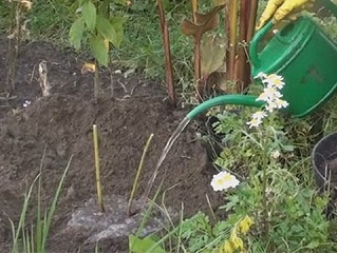
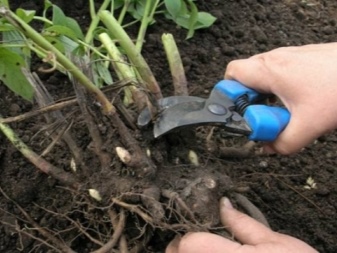
Planting and growing
In garden centers, planting material for peonies, as a rule, is represented by root cuttings. Sometimes you can also find small rooted plants. In the presence of an adult plant, parts of the root system are mainly used for reproduction, which are obtained as a result of division during autumn digging.
Choice of time and place
You can plant peonies in open ground both in spring and autumn. It is preferable to choose the second half of September - this way the plant will have time to take root before the onset of cold weather and in early spring it will start to grow.
Additional Information. Planting dates directly depend on climatic conditions. In the southern regions, they can change to earlier ones, and in cold regions - to later ones.
Peony Command Kerfomans prefers sunny areas. But, given the predisposition of plant flowers to fading and rapid withering in the bright sun, it is better to place plantings in a partially lit place. This implies that it will only be fully illuminated in the morning or afternoon. The site must be protected from strong gusts of wind, and also not be flooded by melt water in spring.
Soil and flower preparation
Root cuttings or part of the root system must be rinsed under running water before planting, dried, damaged and too long roots must be removed.6-8 hours before planting, they are soaked in water at room temperature, and then dried a little in the fresh air.
The soil in the area intended for peonies is prepared in advance. It is better to start these activities a year before planting. During autumn digging, manure or compost, as well as sand, are introduced. Harrowing in the spring is combined with the introduction of complex mineral fertilizers.
Attention! If it is not possible to prepare the site in advance, the soil from the planting pits is mixed with compost, sand and mineral fertilizers 3-4 days before planting.
Landing technology
The process of planting peonies is similar to the technology of planting ornamental shrubs. Procedure:
- 3-4 days before planting, planting pits are prepared with a size of 40x50 cm. The depth of the pits depends on the size of the seedling and should exceed it by 2 times. The distance between the grooves is 80-100 cm.
- A layer of compost 2-3 cm thick is poured at the bottom of each pit.
- The extracted soil is mixed with mineral fertilizer and rotted manure.
- Nutrient soil is poured in the form of a mound in each depression.
- The roots or cuttings are placed so that when the soil subsides, the buds are 7-10 cm below the soil level.
- Planting is close up and watered abundantly.
- The moistened soil is sprinkled with a layer of dry earth.
Immediately after planting, the seedlings need to be mulched. For this purpose, compost or dry manure is used. Mulching will prevent moisture from evaporating and serve as a source of nutrition for the plants in the spring.

Composting in the fall is a top dressing in the spring
Seed planting
Most often, it is recommended to remove wilted inflorescences and prevent seeds from ripening. So the forces of the plant will be directed to the development of the root system.
The seed propagation method is used only in breeding. For crossing certain varieties, flowers are re-pollinated and seeds ripened on them are used for further experiments.


